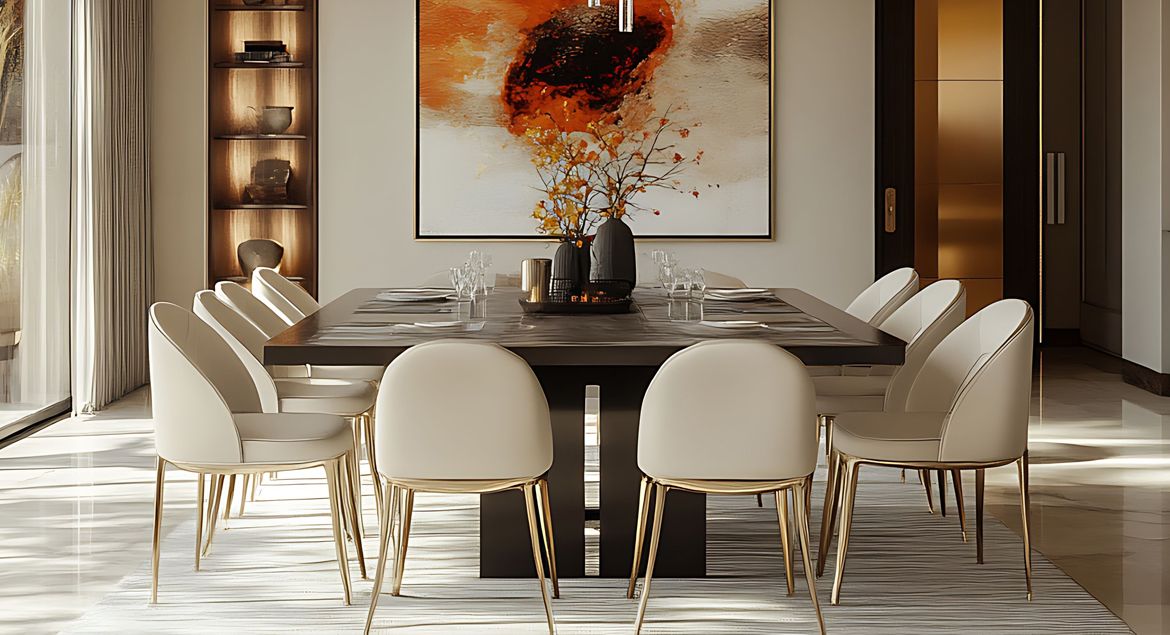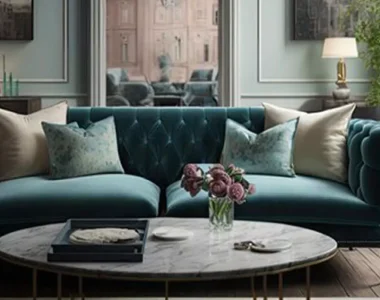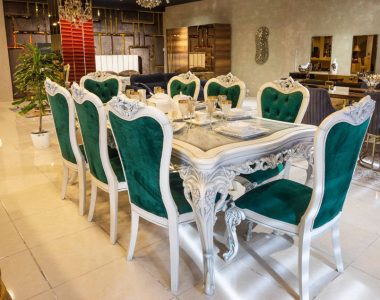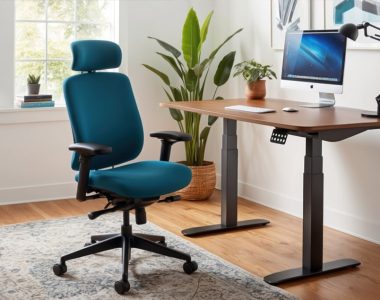The dining table is more than just a piece of furniture; it’s the heart of your home where meals are shared, conversations flow, and memories are made. Selecting the right dining table is a significant decision that impacts both the functionality and aesthetic appeal of your dining area. With countless options available, from various shapes and sizes to materials and styles, making the right choice can be overwhelming. This comprehensive guide, buy Furniture World‘s content marketing team, will help you navigate the process, ensuring you choose the perfect dining table that meets your needs and complements your home.
1. Assessing Your Space
Understanding Your Dining Area
Before selecting a dining table, it’s crucial to assess the space where it will be placed. Consider the size, shape, and layout of your dining area. Is it part of an open-concept living space, a formal dining room, or a cozy breakfast nook? The table should fit comfortably in the space without making it feel cramped.
Measuring the Space
Accurate measurements are essential to ensure your dining table fits well. Start by measuring the length and width of the dining area. Allow for at least three feet of clearance on all sides of the table to ensure enough room for chairs to be pulled out and for people to move around easily. If space is tight, consider a round or oval table, which can offer more seating in a smaller footprint.
Pro Tip: Use masking tape to outline the table’s dimensions on the floor before making a purchase. This will give you a visual idea of how the table will fit in your space.
2. Determining the Ideal Shape
Rectangular Tables:
- Versatility and Functionality: Rectangular dining tables are the most common and versatile option, suitable for both small and large dining areas. They offer ample seating and can often accommodate more people with the addition of a leaf extension.
- Design Considerations: Rectangular tables work well in long, narrow spaces and can be positioned against a wall or in the center of a room. Pair with long benches or side chairs for a cohesive look.
Round and Oval Tables:
- Space Efficiency: Round and oval tables are ideal for smaller spaces or square rooms. They offer a more intimate dining experience, with everyone sitting at equal distance, promoting better conversation.
- Flexible Seating: These tables can accommodate varying numbers of people, depending on their size, and are less likely to create traffic flow issues in tight spaces.
Square Tables:
- Perfect for Square Rooms: Square dining tables are best suited for square-shaped dining areas, providing a balanced and proportional look. They offer an intimate setting, perfect for smaller gatherings.
- Limited Seating: While stylish, square tables typically seat fewer people, so they may not be the best option if you frequently entertain large groups.
Pro Tip: Consider the number of people you regularly host and the overall shape of your dining area when choosing the table shape. For added flexibility, an extendable table can be a great option, allowing you to adjust the size as needed.
3. Choosing the Right Material
Wood:
- Classic and Timeless: Wood is the most popular material for dining tables, offering durability and a warm, inviting look. It’s available in a variety of finishes, from light oak to rich mahogany, allowing you to match your table to your existing decor.
- Maintenance and Care: Wood tables require regular maintenance to prevent scratches and wear. Use coasters and placemats to protect the surface, and apply wood polish periodically to maintain its luster.
Glass:
- Modern and Sleek: Glass dining tables add a modern, open feel to a room, making them a great choice for smaller spaces. The transparency of the glass allows light to pass through, creating an illusion of more space.
- Care and Safety: Glass tables are easy to clean but can be prone to scratches and fingerprints. Tempered glass is a safer option as it’s more resistant to shattering.
Metal:
- Industrial and Contemporary: Metal tables, often made of steel or iron, are durable and add an industrial or contemporary touch to a dining area. They are resistant to scratches and stains, making them a practical choice for families.
- Weight and Comfort: Metal tables can be heavy, so ensure that your dining area can support the weight. They can also be cold to the touch, so consider pairing them with comfortable, upholstered chairs.
Marble:
- Luxury and Elegance: Marble dining tables exude luxury and sophistication, making them a statement piece in any dining room. Each marble slab is unique, offering a one-of-a-kind look.
- Care and Durability: Marble is porous and can stain easily, so it requires regular sealing and careful maintenance. Use trivets and placemats to protect the surface from heat and spills.
Pro Tip: Consider your lifestyle and how much maintenance you’re willing to commit to when choosing a table material. Families with young children may prefer durable materials like wood or metal, while those seeking a luxurious aesthetic might opt for marble.
4. Style and Aesthetics
Traditional
Traditional dining tables feature ornate details, such as carved legs and rich wood finishes. They are often made from dark woods like cherry or mahogany and pair well with upholstered chairs and formal dining settings.
Modern
Modern dining tables emphasize clean lines, minimalism, and functionality. Materials like glass, metal, and light wood are commonly used in modern designs. These tables work well in contemporary homes with open-concept layouts.
Rustic
Rustic dining tables are characterized by their natural, distressed finishes and sturdy construction. Often made from reclaimed wood, they bring warmth and a sense of history to a dining space. Rustic tables pair well with farmhouse-style decor and industrial elements.
Mid-Century
Mid-century dining tables feature sleek, simple designs with tapered legs and organic shapes. These tables are often made from wood and showcase the beauty of natural grain. Mid-century tables are a great fit for retro-inspired homes or eclectic spaces.
Pro Tip: Choose a dining table style that complements your home’s overall decor. If your space is eclectic, don’t be afraid to mix and match styles—just be sure there’s a cohesive element, such as color or texture, to tie the look together.
5. Considering Seating Options
Matching Chairs
For a cohesive look, consider purchasing a dining set where the chairs are designed to match the table. This ensures uniformity in style, material, and height, creating a polished and harmonious appearance.
Mix-and-Match Chairs
For a more eclectic or personalized look, mix and match different chair styles, colors, or materials. Ensure that the chairs are all of a similar height to maintain comfort and balance.
Benches
Benches are a versatile seating option, especially for rectangular tables. They can accommodate more people in a smaller space and can be pushed under the table when not in use, saving space.
Upholstered Chairs
Upholstered dining chairs add comfort and a touch of luxury to your dining area. They are ideal for long meals and gatherings, but consider the fabric’s durability and ease of cleaning, especially if you have children or pets.
Pro Tip: When selecting chairs, consider the height of the table and the chair’s seat height. The standard height difference should be around 12 inches from the seat to the tabletop for comfortable seating.
6. Budgeting and Long-Term Considerations
Setting a Budget
Dining tables come in a wide range of prices, from budget-friendly options to high-end designs. Set a budget that considers not only the table but also the chairs and any additional pieces like a buffet or sideboard.
Quality and Durability
Investing in a high-quality dining table can pay off in the long run. Look for tables with sturdy construction, durable materials, and a finish that can withstand daily use. A well-made dining table can last for decades and even become a family heirloom.
Future Proofing:
Consider how your needs might change in the future. If you plan to move to a larger home or expand your family, a table with a leaf extension might be a wise choice. If you entertain frequently, ensure that your table can comfortably seat extra guests.
Pro Tip: Prioritize quality over trendiness. A timeless, well-crafted table will serve you well for years, even as styles and trends change.
Conclusion
Choosing the perfect dining table is a significant decision that requires careful consideration of space, shape, material , style, seating options, and budget. By taking the time to assess your dining area, understand your needs, and explore various options, you can select a dining table that not only meets your practical requirements but also enhances the aesthetic appeal of your home. Whether you opt for a classic wooden table, a sleek glass design, or a luxurious marble piece, the right dining table will become the centerpiece of countless meals and memories.




